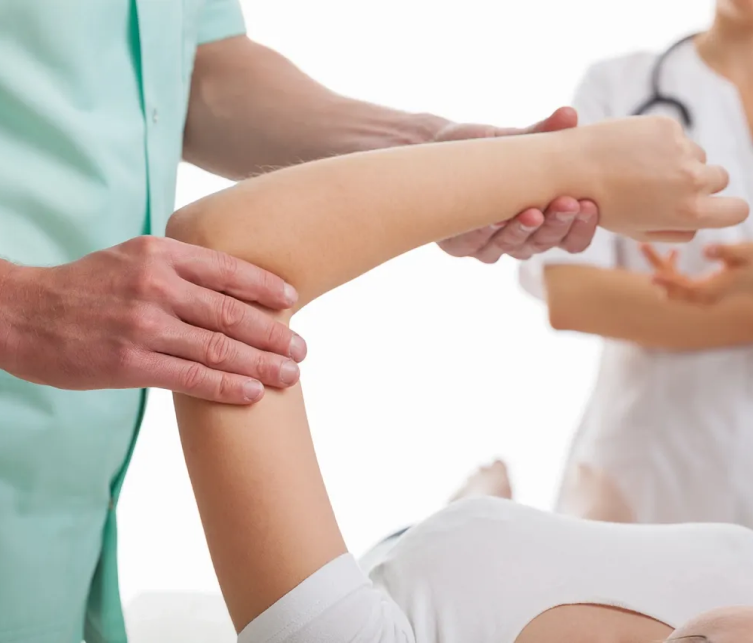Tennis elbow affects more than just tennis players. Is your elbow sore, weak, or painful and not getting better?
Tennis elbow is a painful condition caused when tendons on the outside of your elbow are overused.
Despite the name, most people diagnosed with tennis elbow (lateral epicondylitis) don’t play tennis — however, half of all tennis players will suffer from this problem at some point during their careers.
The pain associated with tennis elbow may radiate from the outside of your elbow into your forearm and wrist. Pain and weakness may make it difficult to:
What activities can be painful and difficult if you have tennis elbow?
- Shaking hands with someone
- Gripping an object
- Turning a doorknob
- Holding a mug
- Using plumbing tools
- Painting
- Driving screws with a screwdriver
- Cutting up ingredients
- Repetitive computer mouse use
Who is at risk for developing tennis elbow?
- Men more than women
- People between ages 30 to 50
- Career or hobby related – tennis players, baseball players, bowlers, plumbers, painters, carpenters, butchers, and others who overwork their elbows on a regular basis.
When injury is caused to the muscles and tendon area around the outside of the elbow where they attach to the bone, tennis elbow can result. Usually, the dominant arm is affected, but tennis elbow can occur in the non-dominant arm, as well, or in both arms.
What are the signs and symptoms of tennis elbow?
You might have tennis elbow if you experience:
- Pain or burning on the outside of your elbow, which may extend into your forearm and wrist.
- Weak grip strength.
The symptoms can develop gradually.
Any activity that causes repetitive movement can cause elbow pain, but the activity generally needs to be done for more than an hour a day on many days to cause a problem. A direct blow or sudden extreme action to the elbow may also result in an injury of the tendons.
Tendons are slow to heal, so the symptoms often last for weeks to months. However, very few cases last longer than a year. We at Southwest Pain Management can help accelerate the healing.
What treatment options do you have for elbow pain?
Common treatments for these conditions are rest, ice, corticosteroid injections, regenerative treatments, and NSAIDs, such as ibuprofen.
But numerous health hazards have been linked to NSAIDs, particularly cardiovascular and gastrointestinal risks.
Here are several treatments we might suggest for tennis elbow:
- Modified rest. If you want the injury to recover, you will need to limit or avoid activities that aggravate your elbow pain. You don’t want to completely rest your elbow, but you do want to modify your activity to use it less without causing more injury to your tendons such as reducing the activities that caused the problem in the first place.
- Technique and equipment evaluation. If you participate in a sport, we suggest you get your equipment checked for proper support. Stiffer rackets and looser-strung rackets can often reduce the stress on the forearm.
- Ice. Applying ice or a cold pack for 15 minutes, three to four times per day can help. Ice treatment after exercise or movement of the elbow is especially important.
- Braces. A forearm strap type brace, or support pads can reduce symptoms by resting the muscles and tendons of the elbow.
- Corticosteroid injections
- Regenerative therapy injections such as PRP or prolotherapy can allow for faster repair.
- Physical therapy.
- Acupuncture.
- Lifestyle management. Our doctors can help you adapt to a healthier lifestyle. We teach our patients which foods are best for an anti-inflammatory lifestyle and how to improve their pain in their daily lives.





